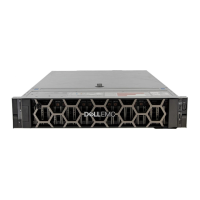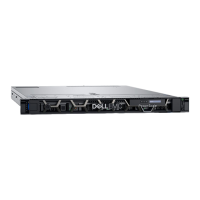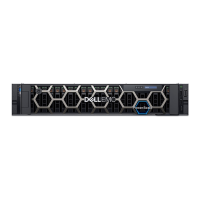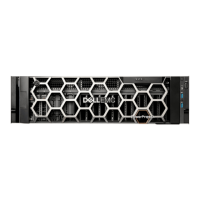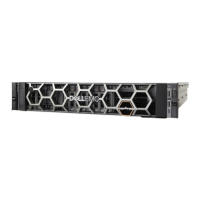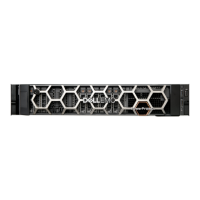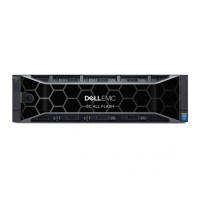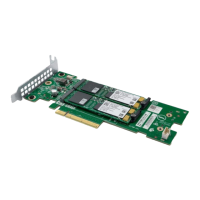Register the host and create and map volumes
Perform the following steps to register the hosts, create volumes, and map volumes:
1. Log in to the ME Storage Manager.
2. Access the Host Setup wizard by doing one of the following:
• From the Welcome screen, click Host Setup.
• From the Home topic, click Action > Host Setup.
3. Confirm that you have met the listed prerequisites, then click Next.
4. Enter a hostname.
5. Using the information from step 3 of Attach hosts to the storage system to identify the correct initiators, select the FC initiators for
the host you are configuring, then click Next.
6. Group hosts together with other hosts.
a) For cluster configurations, use the “Host groups” setting to group hosts in a cluster.
• If this host is the first host in the cluster, select Create a new host group, then provide a name and click Next.
• If this host is being added to a host group that exists, select Add to existing host group. Select the group from the drop-
down list, then click Next.
b) For stand-alone hosts, select the Do not group this host option, then click Next.
7. On the Attach volumes page, use the options to change the volume name and size, select the pool for the volume, and add or delete
volumes. Click Next.
NOTE: Dell EMC recommends that you update the name of the volume with the hostname to better identify the
volumes.
8. On the Summary page, review the changes, then click Configure Host.
• Click Yes to return to the Select Host page of the wizard, or choose No to close the wizard.
• Click Previous to go back and to make changes to the settings.
Enable and configure DM Multipath
Perform the following steps to enable and configure DM multipath:
NOTE:
Safeguard and blacklist internal server disk drives from multipath configuration files. These steps are meant as a
basic setup to enable DM Multipath to the storage system. It is assumed that DM Multipath packages are installed.
For RHEL 7 / SLES 12:
1. Run the multipath –t command to list the DM Multipath status.
2. If no configuration exists, use the information that is listed from running the command in step 1 to copy a default template to the
directory
/etc.
3. If the DM multipath kernel driver is not loaded:
a) Run the systemctl enable multipathd command to enable the service to run automatically.
b) Run the systemctl start multipathd command to start the service.
4. Run the multipath command to load storage devices along with the configuration file.
5. Run the multipath –l command to list the Dell EMC PowerVault ME4 Series storage devices as configured under DM Multipath.
Create a file system on ME4 Series volumes
Perform the following steps to configure a simple XFS file system to mount as a volume:
For RHEL 7 / SLES 12:
1. From the multipath -l command output, identify the device multipath to target creating a file system. In this example, the first
time that multipath is configured, the first device is /dev/mapper/mpatha, correlating to sg block devices /dev/sdb
and /dev/sdd.
NOTE:
Run the lsscsi command to list all SCSI devices from the Controller/Target/Bus/LUN map. This command
also identifies block devices per controller.
2. Run the mkfs.xfs /dev/mapper/mpatha command to create an xfs type file system.
3. Run the mkdir /mnt/VolA command to create a mount point for this file system with a referenced name, such as VolA.
4. Run themount /dev/mapper/mpatha /mnt/VolA command to mount the file system.
Perform host setup
47
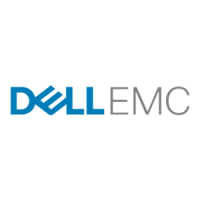
